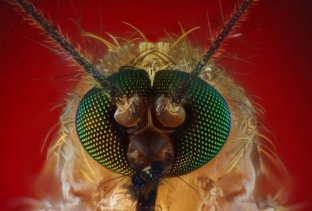Which of us doesn't love to travel? What could be better than in rainy autumn weather to get out for a week in warm tropical countries. But a beautiful tan and pleasant memories are far from the only thing you can bring with you from a trip. Rare diseases common in tropical and subtropical countries are often an unpleasant "souvenir" that can bring a lot of problems. One such disease is filariasis, which causes an abnormal enlargement of the genital organs.
Filariasis – biohelminthiasis characteristic of tropical countries
Filariasis is a biohelminthiasis common in countries with tropical and subtropical climates. Infection occurs as a result of a mosquito bite, which carries the pathogens – filaria. The main human filariasis are wuchereriosis and brugiasis. In the human body, adult filariae parasitize in the lymph nodes and lymphatic vessels, and the larvae or microfilariae – in the vessels of the circulatory system. Filariae obturate the vessels in which they parasitize, provoking the development of an inflammatory process in the walls of the vessels, their sclerotic change, followed by the development of violations of the outflow of lymph. Filariasis in humans most often affects the lymphatic vessels in the pelvis and lower back, which causes the development of a characteristic clinical picture of the disease.

Genital enlargement – characteristic symptom of filariasis
As a result of damage to the lymphatic vessels of the pelvis by filariae, the outflow of lymph from their organs of the pelvis and lower extremities is disturbed, which is manifested by the following characteristic symptoms:
- lymphadenitis – swollen pelvic lymph nodes, which is one of the most important and often the only symptoms of filariasis;
- an enlargement of the genital organs develops as a result of the accumulation of fluid in them and is manifested by a hydrocele or elephantiasis of the scrotum;
- elephantiasis of the lower extremities also occurs when the filariae clog the lymphatic vessels through which the outflow of lymph from the lower extremities occurs;
- lymphangitis of the scrotum organs is an inflammatory process with a characteristic set of symptoms: chills, fever, swelling and hyperemia of the scrotum, an increase in local temperature, an inflammatory process directly in the male genital organs.

Laboratory and instrumental methods for diagnosing filariasis
Diagnosis of filariasis is based primarily on the data of an objective examination, during which the characteristic symptoms of the disease become apparent, as well as on anamnestic data. The patient says that he recently returned from warm tropical countries, after which he complained of an increase in the genitals and other disturbing symptoms. To determine the pathogen, laboratory tests of urine, blood, punctate of lymph nodes and hydrocele are carried out. Lymphography – X-ray contrast study of the vessels of the lymphatic system, allows you to determine the place of penetration of lymph into the organs of the genitourinary system. Cystoscopy can sometimes visualize a varicose lymphatic vessel in the wall of the bladder.
Conservative and surgical treatments for filariasis
Therapeutic tactics for filariasis depends on the severity of the disease and clinical manifestations. The patient is prescribed diethylcarbamazine – anthelmintic, as well as local treatment in the form of instillations of silver solutions into the bladder. If it is possible to visualize the lymphatic vessel from which the lymph enters the organs of the genitourinary system, it is electrocoagulated. If the loss of lymph is massive and it is not possible to coagulate the vessel – the bladder is completely removed. Epididymitis, orchitis and hydrocele are eliminated by surgery, the essence of the operation is to evacuate the accumulated fluid and install drainage.







Add a comment